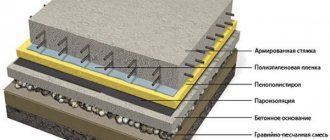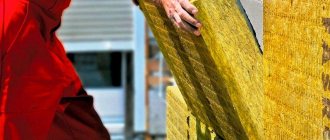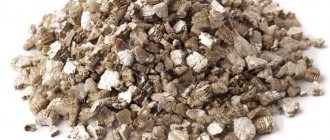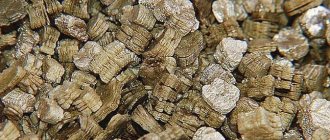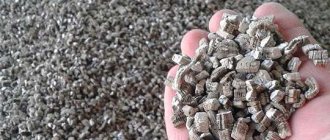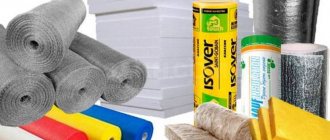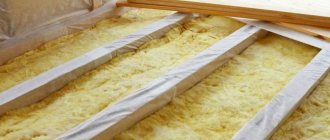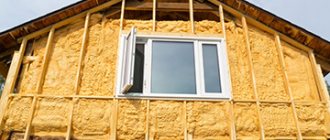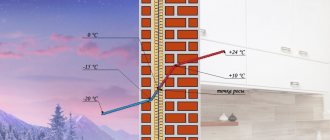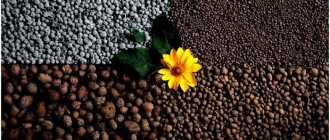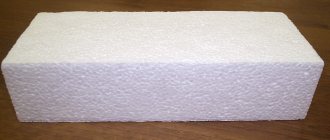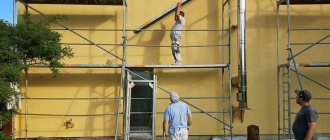What gardener and gardener doesn’t want to harvest abundant harvests every year? For this, various additives and fertilizers are used. With their help, they try to increase the germination rate of seeds, improve the health of the soil, or give it new beneficial properties. Expanded vermiculite has been used as such an additive for more than a hundred years. Its use makes it possible to achieve high results in growing crops and ornamental plants.
Properties
When rapidly heated above 800°C, delamination occurs and increases in volume compared to the original mineral. The structure and properties of vermiculite before and after heat treatment are somewhat different. The water in the crystals turns into steam and causes the individual scales to swell.
Description of the properties of the mineral additive:
- hardness on the Mohs scale - 1–1.5;
- relation to heating - non-flammable, melting point 1350°C;
- solubility - insoluble in water and organic solvents;
- density - 0.065−0.130 g/cm3;
- pH - 5.5–7.
Vermiculite is resistant to abrasion and has lubricating properties similar to graphite. The mineral is chemically inert, resistant to acids and alkalis.
Expanded vermiculite
The vermiculite particles shown in the photo after heat treatment look like worm-shaped columns, threads, golden or silver scales. Heating causes an increase in volume by 15–20 times. Expanded vermiculite is used for growing plants and in the construction industry.
Perlite and vermiculite: what is the difference
If a material has such diverse properties, then it is difficult to cover all the uses for which it is needed in one paragraph. The mineral does not contain microbes, does not decompose, does not rot, and is avoided by insects and rodents. These properties are useful in agriculture and construction, and storage of products.
General information about the mineral
Vermiculite is a granular material in the form of plates of a golden-brown or silvery hue, which is most similar to hydromica, and in fact, it is just that. The term itself comes from the Latin vermiculus, which translated into Russian means “worm”.
If vermiculite is exposed to high temperature, its plates will take the form of thread-like granules, which in appearance resemble small worms. Due to its porous structure, the material is able to absorb and retain moisture, the volume of which can be 4 times its own weight. In other words, it acts like a good sponge.
This quality makes vermiculite an indispensable additive to earthen mixtures. At the same time, soil moisture is retained for quite a long time, as are nutrients.
Application for plants
Vermiculite absorbs water in large quantities and releases it gradually. The water absorption coefficient is 400–500%, that is, every 100 g of mineral binds and stores more than 400 ml of water in its structure. An important property of vermiculite for plants is the creation of an optimally moist soil environment.
The material has earned the honorable name of “agronomic” rock.
Let's list why plants need vermiculite and in what situations it is most useful:
- Added to earthen mixtures to improve aeration (air permeability) and water absorption.
- Crushed expanded crystals are used in agriculture as a substrate for hydroponic culture (growing without soil).
- To mulch the soil, a mineral with different particle sizes is used - from dust-like to the diameter of small coins.
- Saturates the soil with substances beneficial to plants.
The mineral supplement prevents the growth of bacteria and fungi. In addition, vermiculite is a fertilizer, as it contains potassium, magnesium, and iron. Adding material to the soil helps grow healthier, stronger seedlings. The following uses exist.
Germinating seeds, growing seedlings and rooting cuttings
The mineral additive ensures a uniform supply of moisture to the seeds during germination. The inert material protects against rotting and the spread of mold.
How to use vermiculite to germinate seeds:
- the material is pre-moistened with water;
- fill containers for germination;
- sowing seeds;
- placed in a warm place.
Planting material can be sprinkled with the finest fraction of the mineral when sowing in the beds. This helps distribute the seeds evenly and protects against evaporation. Sprouts, and then seedlings, receive moisture evenly, the roots are protected from temperature changes.
Drainage
Vermiculite is less often poured as a drainage material at the bottom of the pot. Expanded clay is most often used for this purpose. However, large fractions of layered mineral are also good drainage.
How to choose the right garden pruners
Pour a layer of mineral additive 1–2 cm high at the bottom of the container for planting. Drainage absorbs excess water, waterlogging of the soil substrate is excluded. At the same time, the soil is enriched with macro- and microelements.
Soil improvement
This is one of the main uses of vermiculite, for which this material is used in agriculture. The mineral additive is mixed with the soil in different proportions depending on the type of plant.
The enriched substrate does not cake, does not undergo calcification (formation of white plaque on the surface), and does not acidify.
Mulching
Used as mulch to protect the soil from excessive evaporation. A layer of mineral additive creates a microclimate on the soil surface that is favorable for roots. One method of application: water the plants and sprinkle the damp substrate with mulch. You can loosen the soil, cover it with a thin layer of vermiculite and dig it up.
In the greenhouse
Sow the seeds and plant the seedlings in soil mixed with vermiculite. Less watering will be required, replanting will become less stressful, and plant adaptation to new conditions will be easier. Thanks to the additive, fertilizing is better absorbed.
Storing bulbs and tubers
The mineral additive is used for winter storage of planting material. In the fall, dig up tubers, bulbs, corms and rhizomes of plants that cannot overwinter in the soil due to low temperatures. Place the planting material in boxes and cover with vermiculite.
Mineral in the garden
Mulch the ground around fruit and ornamental trees and shrubs with vermiculite. This treatment is useful when the area becomes waterlogged in the event of heavy rainfall. Mulch also prevents roots from freezing in winter.
Make money?
There are many companies in Russia that produce plants for the production of expanded vermiculite. However, almost all of them are “tailored” for organizing a large business (for example, a vermiculite processing plant), which requires large financial investments. There are very few options for small businesses. One of them is mobile, economical and low-investment installations.
- What you need to organize your own vermiculite production:
- Open area size: 15m x 20m.
- Electricity supply.
- Vermiculite production plant.
- Vermiculite concentrate.
- One or two workers to work on the installation and to pack the finished product (expanded vermiculite).
Stage one. Installation selection
It’s difficult to give any specific advice here. Today there are several companies that offer relevant equipment in Russia. So there is plenty of equipment to choose from.
Stage two. Preparation of production areas
1. Preparation of a horizontal site for placement of the Installation. Layout, filling with crushed stone. 2. Construction of sheds and light buildings for a warehouse for vermiculite concentrate and a warehouse for finished products (expanded vermiculite).
Stage three. Purchase of raw materials
You can purchase vermiculite concentrate in the Murmansk region (Kovdor deposit), in the Chelyabinsk region (Kyshtym vermiculite deposit), Krasnoyarsk Territory (Tatar deposit), Primorsky Territory (Koksharovskoe deposit of vermiculite slabs), etc.
Depending on the operating mode of the enterprise, personnel are formed. During single-shift operation, the installation is operated by one person.
- To organize the work, the following capital investments are required:
- The cost of purchasing the installation is 2,750,000 rubles.
- The cost of purchasing raw materials (car of 60 tons) is 500,000 rubles.
- The cost of diesel fuel is 2100 l x the price of diesel fuel is different in each region.
- Electricity costs – 600 kW x 4-00 = 2400 rubles.
A few words about the payback of such installations. As participants in this market say, on average, equipment pays for itself in 9-10 months, maximum in a year.
The last stage. Implementation
The ideal clients for small businesses are individuals. Expanded vermiculite is used for insulating floors, attics, basements, chimneys, and baths. By adding vermiculite to the soil in your garden, you can increase productivity, reduce the mortality of livestock and poultry, since vermiculite is a sorbent, you can increase weight gain in livestock and poultry, and egg production in chickens.
In addition, based on expanded vermiculite, you can get a number of other products: soil for growing home flowers, dry mixtures for warm plasters, fire-retardant compounds, fire-retardant varnishes, paints, pastes, plasters, and much more.
You can develop and receive new sources of income and use of vermiculite boards endlessly. Vermiculite production is an affordable, highly profitable business that does not require special qualifications, allowing the owner to quickly increase his well-being.
Vermiculite consumption
The method of application and the required amount of material depends on the purpose of its use.
- Add 10–15% of the volume to the substrate for growing decorative potted plants.
- To root cuttings, prepare a mixture of peat and vermiculite in a 1:1 ratio.
- When planting potatoes, place ½ tbsp in each hole. l. mineral supplement.
- For tree trunk circles, use 6–8 kg of mulch for each square meter of area.
- To improve heavy soils, add 2 liters of vermiculite per square meter of plot area.
- Add 10 kg of mineral per 100 liters of organic matter to the compost.
How to grow tomato seedlings at home
For items 1–3, it is recommended to use small fractions of the mineral. This is necessary to protect the tender roots of young plants from damage. In other cases, particle sizes are not critical.
Perlite and vermiculite - what is the difference
Perlite, unlike vermiculite, consists only of silicon. This is a rock of volcanic origin. Rounded perlite particles are capable of accumulating and gradually releasing moisture, like vermiculite flakes.
What's best for plants
Both minerals are used in agriculture. However, perlite for plants is less common. Unlike vermiculite, volcanic rock retains moisture less and is not a fertilizer.
Industrial products
The properties and uses of vermiculite in various industries are interrelated. The mineral is used for the manufacture of thermal insulation products, as a carrier for soluble substances. The product is added to lightweight concrete and decorative plaster mortars.
The advantage of the material compared to perlite is its elastic structure.
Vermiculite is used for the production of heat and fire retardant products by pressing. The mineral is used in the manufacture of fire-resistant doors, and is used as a filler in the production of plastics, rubber, paints, and wallpaper.
Fertilizer analogues
If the seedlings do not grow, it is time to start applying fertilizer. The most harmless would be vermiculite. But it is most often purchased in large quantities before planting. The search for an analogue that can replace mineral supplements may not be successful. Reason: lack of an exact analogous substance.
There is no need to despair. Just take the substitute more seriously. Each option has its positive aspects:
- Sawdust. Only rotted ones are used, but not rotted ones. Otherwise, the soil will not receive the required dose of nitrogen. But the acidity will be more than needed.
- Sand is suitable as a baking powder. Make sure there is no cement dust in it.
- Sphagnum moss is suitable for maintaining moisture and for germination. Serves as a means of disinfection and moisture preservation.
- You can use hydrogel or coconut fiber.
- Perlite is suitable for inorganic raising agents. True, the soil will dry out faster.
Finding a product that can retain moisture and promote growth is quite difficult. But you can always consider mixtures and complex products.
